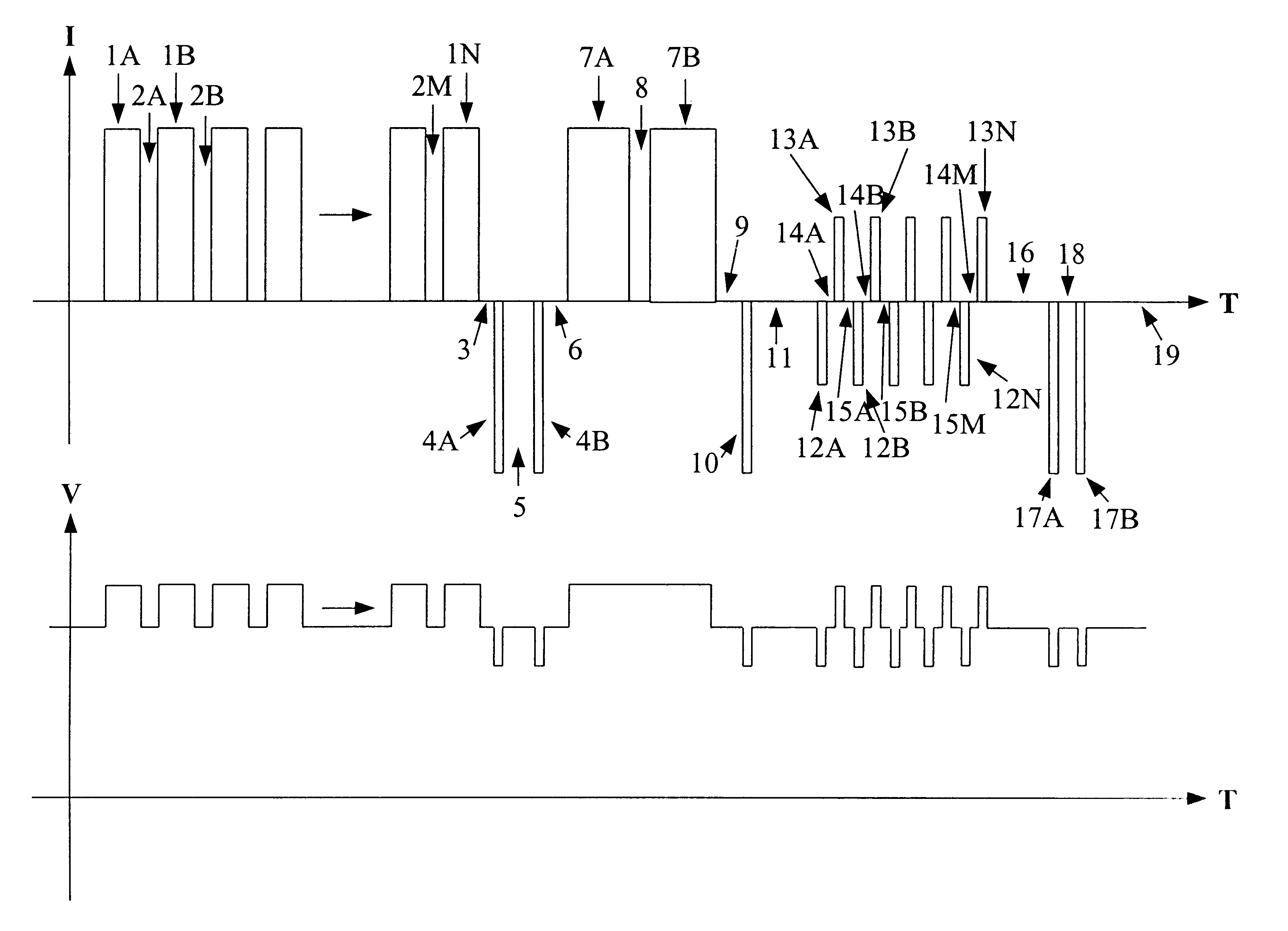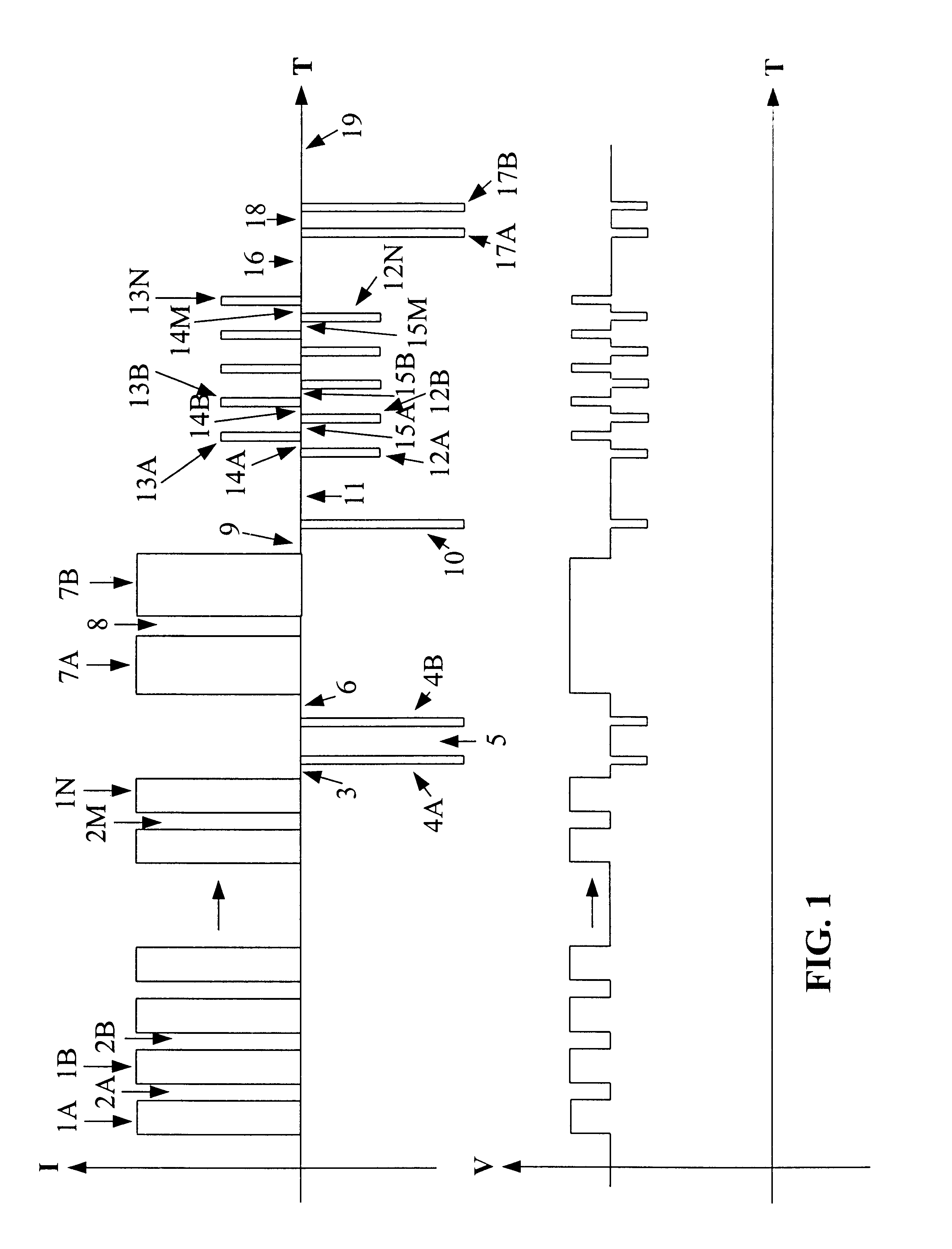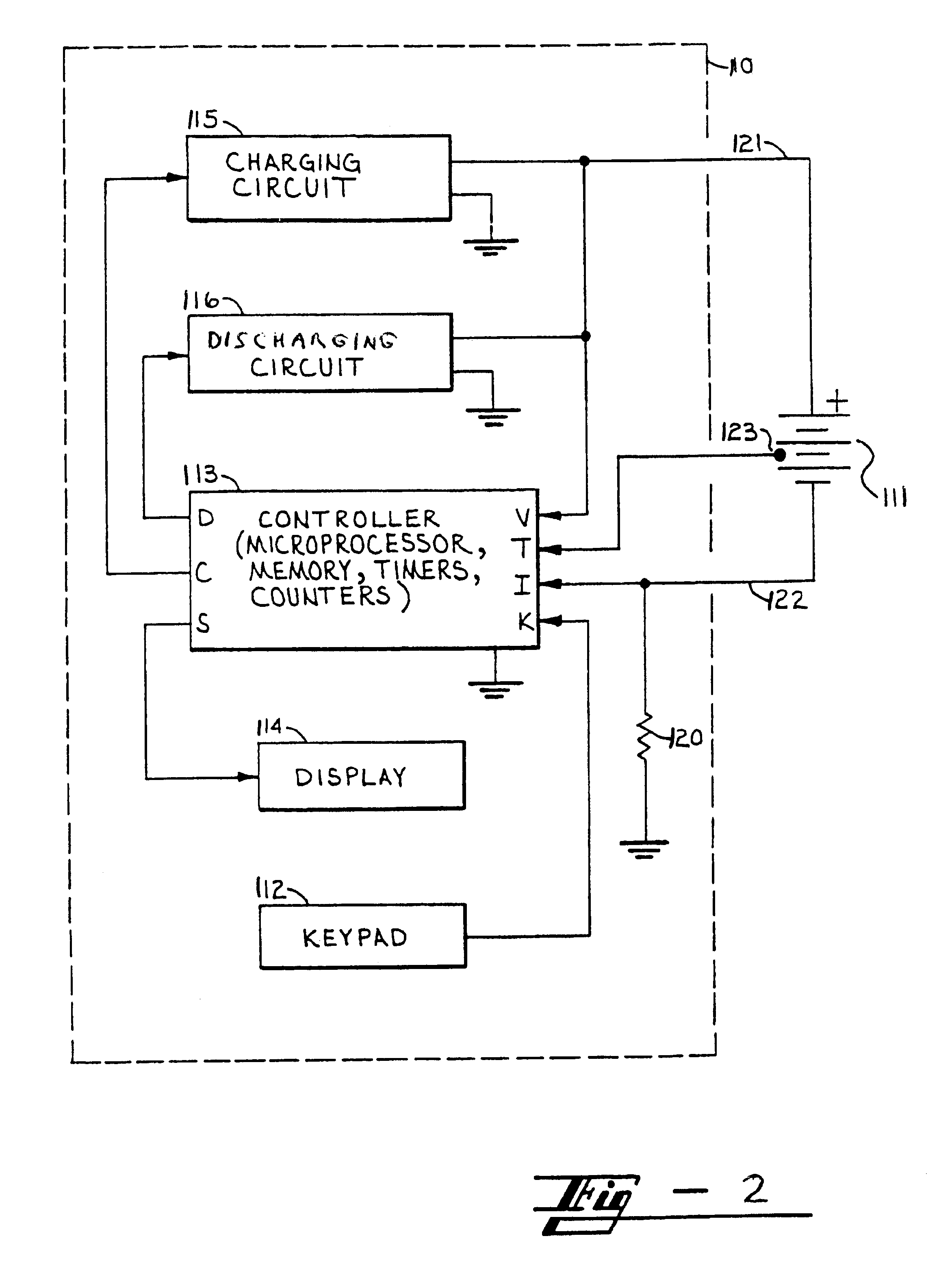Battery charger for lithium based batteries
a lithium-based battery and battery charger technology, applied in the direction of secondary cell servicing/maintenance, electrochemical generators, transportation and packaging, etc., can solve the problems of battery-operated devices that users continue to experience problems, battery life is often shorter, and battery use is increasingly unstable and less understood, etc., to increase the available capacity of the battery, and increase the cycle life of the battery
- Summary
- Abstract
- Description
- Claims
- Application Information
AI Technical Summary
Benefits of technology
Problems solved by technology
Method used
Image
Examples
Embodiment Construction
Of The Charging Apparatus Of The Present Invention
FIG. 2 is a block diagram of the preferred embodiment of the charging apparatus of the present invention, although other embodiments may be used. The circuit 110 comprises a keypad 112, a controller 113, a display 114, a charging circuit 115, a discharging circuit 116, and a current monitoring circuit 120. Keypad 112 is connected to the "K" input of controller 113 and allows the user to input specified parameters such as the battery type (lithium ion, lithium polymer, etc.), and other relevant information, such as a nominal battery voltage or number of cells in series. Keypad 112 may be a keyboard, dial pad, array of switches, or other device for entering information. To simplify operation by the user, controller 113 may be preprogrammed with the parameters for a plurality of battery types. In this case the user would simply enter a battery type, such as a model number, and controller 113 would automatically use the parameters approp...
PUM
| Property | Measurement | Unit |
|---|---|---|
| voltage | aaaaa | aaaaa |
| charging time | aaaaa | aaaaa |
| charge pulse voltage | aaaaa | aaaaa |
Abstract
Description
Claims
Application Information
 Login to View More
Login to View More - R&D
- Intellectual Property
- Life Sciences
- Materials
- Tech Scout
- Unparalleled Data Quality
- Higher Quality Content
- 60% Fewer Hallucinations
Browse by: Latest US Patents, China's latest patents, Technical Efficacy Thesaurus, Application Domain, Technology Topic, Popular Technical Reports.
© 2025 PatSnap. All rights reserved.Legal|Privacy policy|Modern Slavery Act Transparency Statement|Sitemap|About US| Contact US: help@patsnap.com



